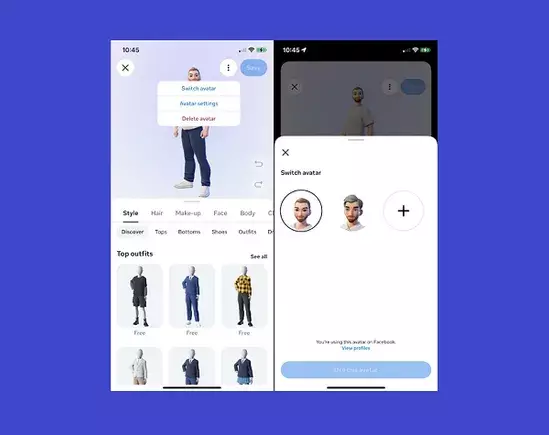In an era where digital presence increasingly mirrors our real-world identities, Meta’s evolving avatar system is marking a significant leap forward. Contrary to initial assumptions that multiple avatars might remain a novelty, they are rapidly becoming essential tools for versatile self-expression across various online platforms. These digital personas serve not just as playful caricatures but as strategic symbols of identity customization. Meta’s push for richer avatar customization indicates a deeper understanding: in a digital age dominated by virtual interactions, controlling one’s digital appearance is akin to shaping perception and identity. The innovative feature allowing users to create and manage multiple avatar versions transforms passive profile images into dynamic representations adaptable to different contexts. Whether for casual socializing, professional interactions, or immersive VR experiences, the ability to switch between distinct avatars bestows users with unprecedented flexibility and personalization power.
Expanding the Canvas of Creativity and Self-Representation
Meta’s commitment to refining avatar creation tools is ambitious and user-centric. The process—accessible through simple settings and menus—encourages even novice users to experiment with their digital looks. Yet, the real strength lies in the ongoing enhancements: new body types, diverse poses, expressive emotes, and customizable features elevate the avatar experience from static images to living embodiments of personality. The recent inclusion of AI-driven options for retexturing and custom clothing design reveals Meta’s strategy to foster a more immersive and personalized metaverse. This isn’t merely about aesthetics; it’s about empowering users to craft avatars that reflect their evolving identities and cultural expressions. The layered complexity available—ranging from hairstyles to facial features—allows for billions of permutations, emphasizing that digital identity can be as rich and nuanced as physical reality. While some skeptics may dismiss these features as superficial, the underlying principle is clear: personalization nurtures engagement and emotional connection in virtual spaces.
The Strategic Value of Multiple Avatars
While at first glance, the idea of managing multiple avatars may seem trivial or overly niche, it conceals a strategic shift in how digital personas are utilized. Multiple avatars enable users to adapt their virtual presence to different environments—be it professional, casual, or fantastical. For content creators, gamers, or online influencers, these alternatives afford a new level of creative expression and audience engagement. For instance, one might employ a more formal avatar for business interactions and a whimsical one for casual chats or gaming streams. This flexibility subtly blurs the boundaries between various facets of a user’s life, fostering authenticity and variety simultaneously. Moreover, with features like sharing custom textures or using AI-generated enhancements, the process of building diverse personas becomes more streamlined and accessible. Overall, the capacity to maintain multiple avatars exemplifies Meta’s recognition that digital identity is no longer singular but multilayered, fluid, and context-dependent.
Broader Implications for the Metaverse and Digital Society
Meta’s persistent innovation in avatar technology signals a broader philosophical shift—moving toward a future where digital selves are both deeply personalized and integral to social interaction. The company’s vision of the metaverse hinges on creating interactive, believable, and customizable avatars that serve as our avatars in expansive digital worlds. This isn’t just about enhancing social media but preparing for an immersive universe where virtual and physical identities intertwine seamlessly. As avatar customization becomes more detailed—incorporating new facial controls, unique accessories, and expressive movements—the line separating identity from performance begins to erode. This democratizes self-expression but also raises questions about authenticity, identity fluidity, and the social ramifications of surrounding ourselves with multiple versions of ourselves. Nonetheless, what’s undeniable is that Meta’s investment in avatar technology signifies a critical step toward a future where digital identity will be as nuanced and vital as our real lives, if not more so.

